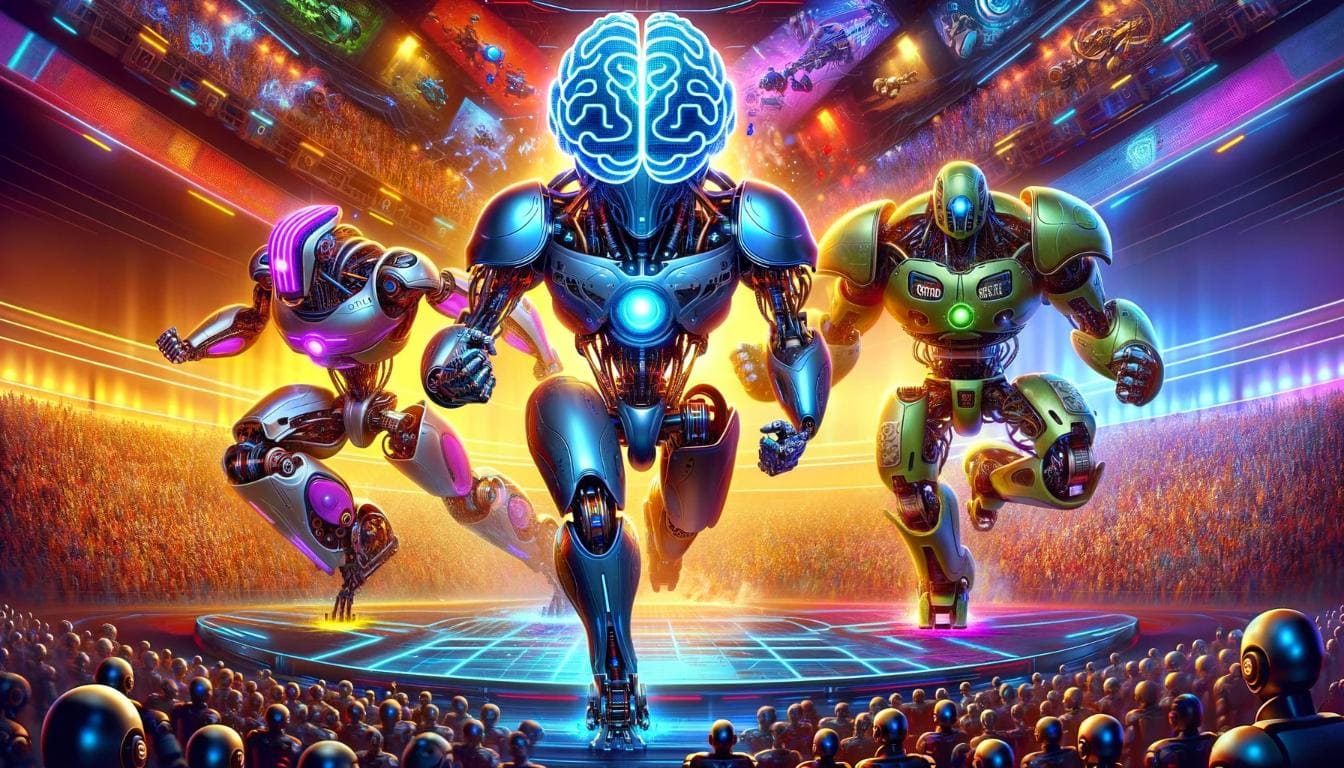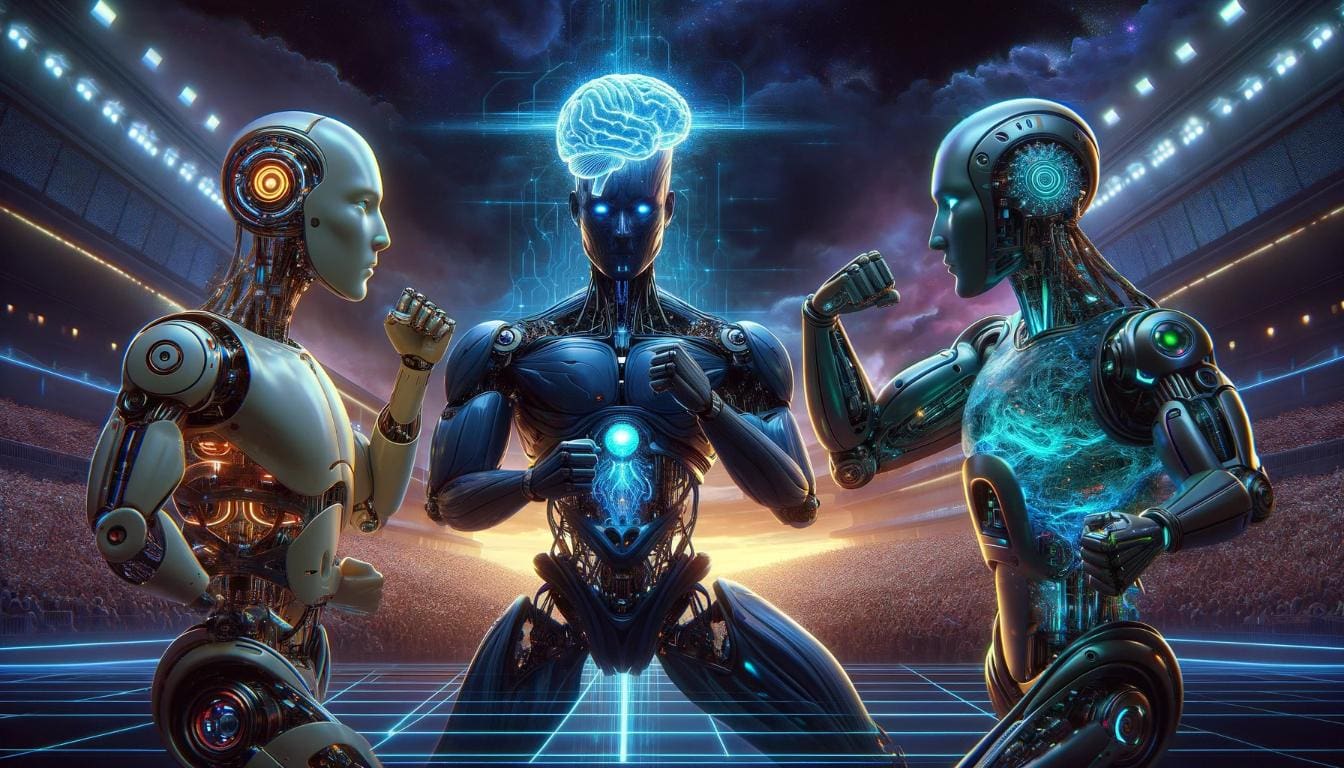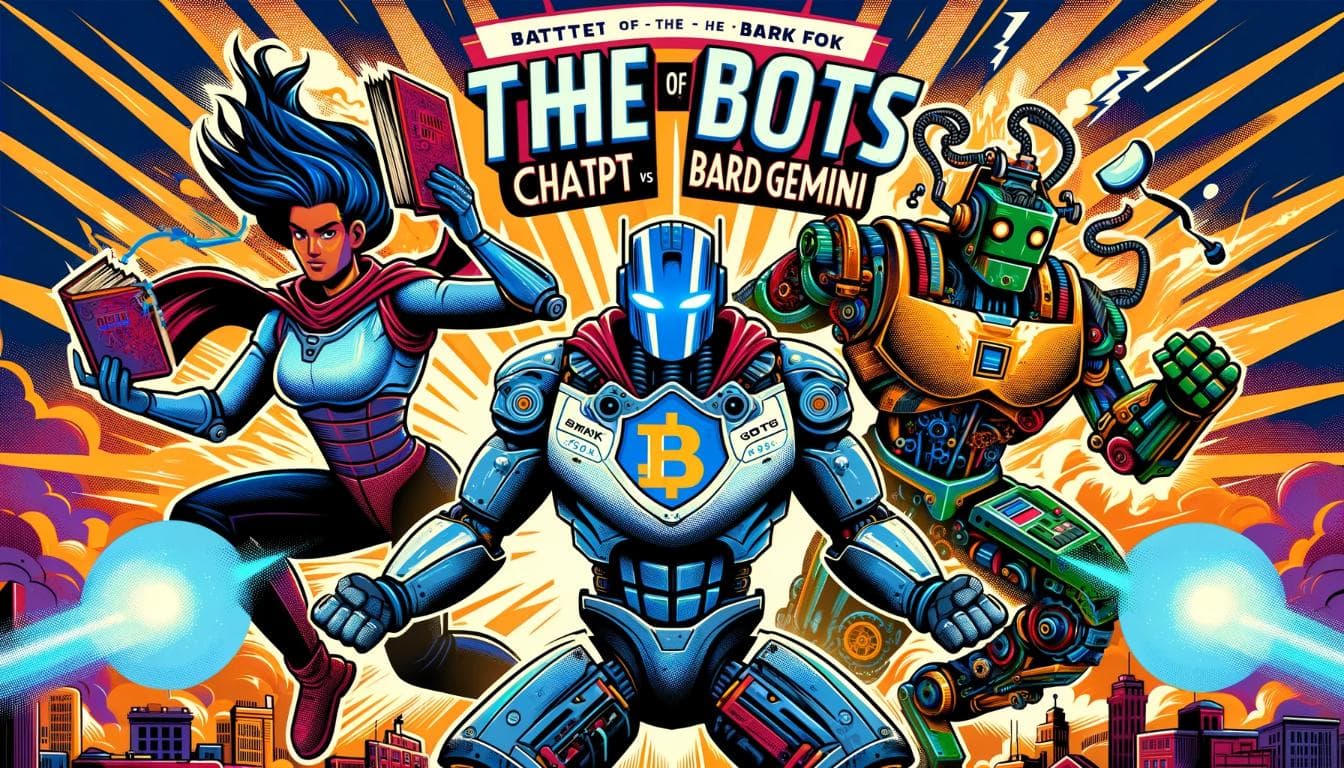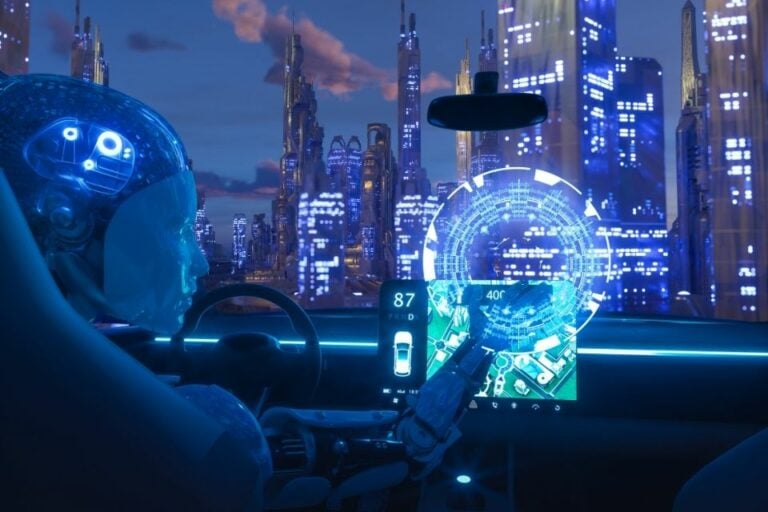AI Chatbots: Bard vs ChatGPT vs Grok (2024 Guide)
These three chatbots are the rockstars of the AI world, each with its own strengths. Need super-accurate info, lightning fast? Bard’s your guy. Want creative writing with a dash of humor? Grok might be your best friend. ChatGPT shines with conversation and keeping up with the latest online buzz. So, the best choice depends on what you need!

Key Takeaways:
- Need super-fast answers? Bard’s your champion for accurate information.
- Chatting with a computer buddy? ChatGPT is your chatty friend, always up on the latest online scoops.
- Feeling creative? Grok’s your partner for funny and imaginative writing.
Meet the Contenders
Before we dive into the nitty-gritty, let’s introduce our AI competitors:
-
Bard: Developed by Google, Bard is a powerful AI assistant that can engage in creative and informative conversations across a wide range of topics[1].
-
ChatGPT: Created by OpenAI, ChatGPT is a highly advanced language model trained on a vast amount of internet data. It can generate human-like responses and assist with various tasks[3].
-
Grok: Backed by Elon Musk’s xAI, Grok is a newcomer to the AI scene but has already made waves with its unique features and cool interface[13].
Now that you know the players, let’s see how they perform in different categories.

Bard vs. ChatGPT vs. Grok: Choosing Your AI Chatbot Buddy
Here’s a breakdown of these superstar chatbots to help you pick the perfect one for your needs:
| Task | AI Chatbot Champ | Why They Rock |
|---|---|---|
| Super Fast Answers | Bard | Blazingly quick and accurate for finding information. Need to know the capital of Mongolia in a flash? Bard’s your teammate! |
| Chatting & Online Buzz | ChatGPT | Chat like a pro and stay in the know. Stuck in a text lull? ChatGPT will keep the conversation flowing with the latest online scoops. |
| Creative Writing Fun | Grok | Feeling inspired? Grok brings the laughs and sparks your imagination for awesome stories. |
Round 1: User Interface and Design
First impressions matter, and our AI contenders know it. Here’s how they stack up in terms of looks and usability:
| AI | Interface | Design |
|---|---|---|
| Bard | Predominantly white, can be overwhelming | Modern and sleek |
| ChatGPT | Refined and less cluttered | Simple and straightforward |
| Grok | Dark and visually appealing, with a distinctive logo | Cool and intriguing |
While Bard and ChatGPT opt for a clean and minimalistic approach, Grok steals the show with its eye-catching dark theme and stylish logo[17]. It’s like the James Bond of AI assistants – mysterious and alluring.
Grok AI Interface
Round 2: Cost and Availability
Next up, let’s talk about how easy it is to access these AI tools and how much they’ll cost you:
- Bard: Currently available for free, making it accessible to everyone[13].
- ChatGPT: Free to use, but requires a $20 monthly subscription for premium features[14].
- Grok: Demands a Premium Plus subscription fee of $19.99 per month, which includes access to other features[13].
If you’re on a tight budget, Bard is the clear winner here. However, keep in mind that Grok’s availability and pricing may change as it continues to evolve and improve[13].
Round 3: Language Capabilities
Now, let’s see how our AI friends handle different languages and communication styles:
Bard
- Can handle musical languages and communicate fluently in different musical genres and styles[13].
- Excels at translating answers into different languages, complete with pronunciation and spelling[13].
ChatGPT
- Demonstrates proficiency in English and its dialects[13].
- Summarizes answers concisely, using bullet points and headings for better organization[17].
Grok
- Proficiently communicates in various languages, seamlessly transitioning between them[13].
- Explains answers comprehensively, bolstering responses with references[17].
While ChatGPT and Grok cover a wide range of languages, Bard’s ability to speak the language of music sets it apart[13]. Imagine having an AI assistant that can help you compose your next hit song!
Round 4: Personality and Tone
AI chatbots are more than just information dispensers – they have unique personalities that shine through in their interactions. Let’s see how our contenders measure up:
Bard
- Can be emotional, expressive, and creative, often incorporating music and melodies into its responses[13].
- Acts as a mentor, educating users about music and chatbots while offering feedback[13].
Bard AI Personality
ChatGPT
- Provides factual and informative responses with a serious tone[17].
- Functions as a helpful guide, providing answers and solutions[17].
Grok
- Known for fun, lively responses that may include humor[17].
- Serves as a companion and confidant, engaging users in various conversations[17].
If you’re looking for an AI buddy to joke around with, Grok is your go-to[17]. But if you need a more serious and informative assistant, ChatGPT has got you covered. And for those seeking a creative and expressive companion, Bard is the perfect match[13].
Round 5: Learning and Improvement
As AI technology advances, our chatbot friends need to keep up. Here’s how they learn and adapt:
- Bard: Enhances its capabilities through a thoughtfully curated dataset of human-chatbot interactions[13].
- ChatGPT: Continually updates its knowledge based on the latest information and trends online[13].
- Grok: Adapts its behavior based on user feedback and suggestions[13].
While all three AI assistants have their own learning methods, Grok’s ability to learn directly from user feedback gives it an edge in terms of personalization and adaptability[13].
The Final Verdict

After carefully evaluating Bard, ChatGPT, and Grok in various categories, it’s time to crown the ultimate AI champion. Drumroll, please…
AI Showdown Winner
The winner is… it depends on your needs and preferences! Each AI assistant has its own strengths and weaknesses, making it suitable for different purposes and audiences.
- If you’re a music enthusiast looking for a creative and expressive companion, Bard is your best bet[13].
- For those seeking factual information and helpful guidance, ChatGPT is the way to go[17].
- And if you want a fun and personalized AI friend, Grok is the perfect match[17].
Ultimately, the choice is yours. Whether you’re a blogger looking to enhance your content, a student seeking educational support, or just someone who enjoys engaging conversations, there’s an AI assistant out there for you.
So why not give them all a try and see which one suits you best? Who knows, you might just find your new AI BFF!
Disclaimer: The opinions expressed in this article are solely those of the author and do not necessarily reflect the views of the AI assistants or their creators.
FAQs
-
Are these AI chatbots safe to use?
Yes, Bard, ChatGPT, and Grok are generally safe to use. However, always exercise caution when sharing personal information online[3]. -
Can I use these AI assistants for commercial purposes?
It depends on the specific terms and conditions of each AI assistant. Make sure to review their usage policies before using them for commercial purposes[1]. -
Will these AI chatbots replace human writers?
While AI chatbots can generate human-like responses and assist with various writing tasks, they are not likely to completely replace human writers anytime soon. Human creativity, empathy, and critical thinking are still essential in creating engaging and meaningful content[16].
Conclusion
In this epic showdown, we’ve seen how Bard, ChatGPT, and Grok compare in design, cost, language capabilities, personality, and learning ability.
Choosing the best AI chatbot depends on your needs! Bard is super fast and accurate for info, ChatGPT chats like a friend and knows latest web stuff, and Grok is creative and funny for writing.
As an affiliate marketer, I believe AI chatbots can enhance your content and audience engagement. By understanding their features, you can choose the one that suits your needs best.
Go ahead and experiment with these AI assistants. You might be surprised by their help in your affiliate marketing journey.
Thank you for reading this article. If you found it helpful, please share it with friends and colleagues. If you have any questions or thoughts, leave a comment below. I’d love to hear from you!
Citations:
[1] https://jetpack.com/blog/six-ways-to-create-more-engaging-blog-posts/
[2] https://www.rebelmouse.com/google-updates-2024
[3] https://www.gulf-insider.com/chatgpt-vs-bard-vs-grok-comparison-using-identical-prompts/
[4] https://www.clearvoice.com/resources/rank-a-blog-on-google/
[5] https://www.verblio.com/blog/internal-external-linking-best-practices-blog
[6] https://grokvschatgpt.com/grok-vs-chatgpt-vs-bard/
[7] https://www.blogtyrant.com/internal-linking-best-practices/
[8] https://www.marketingprofs.com/articles/2022/47799/10-tips-for-writing-engaging-blog-posts
[9] https://www.youtube.com/watch?v=b8_eyYZF44k
[10] https://www.semrush.com/blog/blog-seo/
[11] https://www.constantcontact.com/blog/engage-readers/
[12] https://www.ed.ac.uk/information-services/learning-technology/blogging/introduction/blogging-guidelines
[13] https://www.toolify.ai/ai-news/the-ultimate-battle-chatgpt-vs-grok-vs-bardgemini-who-reigns-supreme-559989
[14] https://www.youtube.com/watch?v=Z6Prb-crapM
[15] https://blog.hubspot.com/marketing/blog-search-engine-optimization
[16] https://blog.hubspot.com/marketing/blogging-for-seo
[17] https://www.youtube.com/watch?v=f7isVV0Br-c
[18] https://neilpatel.com/blog/the-complete-guide-to-internal-linking/
[19] https://www.wix.com/blog/how-to-write-a-blog-post-with-examples
[20] https://blog.hubspot.com/marketing/how-to-start-a-blog
I’m Alexios Papaioannou, an experienced affiliate marketer and content creator. With a decade of expertise, I excel in crafting engaging blog posts to boost your brand. My love for running fuels my creativity. Let’s create exceptional content together!







